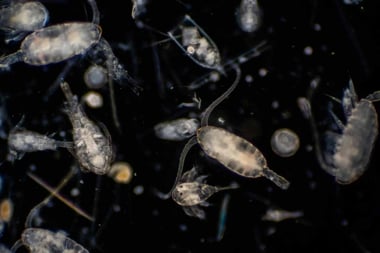environment
Toronto residents can breathe a little easier now that Canada's largest city has banned pesticide us.
Toronto Passes Pesticide Ban
Toronto residents can breathe a little easier now that Canada's largest city has banned pesticide use. Advance polls indicated 70 to 80 per cent of townies supported the initiative, which will put an end to cosmetic pesticide use on public lawns, gardens and green areas by spring 2004.
Studies have linked common pesticides to various cancers and neurological and reproductive problems. Children are especially vulnerable to their effects.
At time of print, the European Union was intending to withdraw approximately 320 pesticide products from the market in July 2003 as part of a plan to re-evaluate their effect on human health and the environment.
Similarly, a newer version of Canada's pesticide laws received Royal Assent last December. Although some would argue the Pest Control Products Act 2002 still isn't precautionary enough, it nevertheless takes a safer approach to agricultural chemicals than its 30-year-old predecessor.
Toronto is just one of a growing number of communities enacting legislation to reduce unnecessary pesticides. For more info, visit the Canadian Environmental Law Association Web site at cela.ca or phone 416-960-2284.
Get Involved! Visit alive.com ("Lobbying Letters") and download a letter opposing pesticide use that you can sign and send to your MP.
Home Green Home
If your home is where the chemicals are, then check out a new online resource on how to green your living space. With tips from "Make the Connection: Health and Environment, 2002," learn to reduce and eliminate chemical exposure from toxic cleaning ingredients, common household pesticides and pest-control products.
There are great ideas for non-toxic cleaning and pest-control remedies. Got a lipstick stain on your collar? Try rubbing it with cold cream or shortening to dissolve colour. Then rinse it in a solution of washing soda and warm water to remove grease, followed by a wash in soapy water.
Or how about one of everybody's worst bathroom nightmares-mildew? Combine one-half cup vinegar, one-half cup borax and warm water in a spray bottle. Spray and scrub off with nylon scouring pad. Three downloadable booklets (total 74 pages) are available at herc.org/maketheconnection/ from the Health and Environmental Resource Center in Colorado.
Safer Dry-Cleaning Solutions
Suppose you drop salad dressing on your favourite shirt. What do you do? Ten years ago, you probably would have visited a dry cleaner who used perchloroethylene (perc), an industrial chemical recently coming under fire. Used to dissolve oily stains, perc is a thyroid-hormone disruptor. "It is known to attack the central nervous system and is a suspected cause of a number of reproductive disorders, as well as a carcinogen in rodent studies. Infertility in both men and women and menstrual disorders have been linked to perc exposure," writes D. Lindsey Berkson in Hormone Deception (Contemporary Books, 2000).
But now it's becoming easier to find cleaners who rely on safer methods of treatment such as high-pressure liquid carbon dioxide and high-tech wet cleaning with biodegradable detergents. To find a greener dry cleaner and for some great links, visit the Canadian Centre for Pollution Prevention at c2p2online.com.




